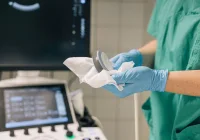Hospitals depend on reliable digital services to deliver safe,timely care, yet traditional monitoring often alerts teams only after something has gone wrong. Observability offers a fuller view of system behaviour by unifying telemetry across applications, infrastructure and networks, helping IT leaders detect patterns that precede incidents, understand root causes and accelerate recovery. With security risks rising and uptime central to clinical workflows, a shift from reactive alarms to proactive insight is gaining momentum. The approach also promises leaner toolsets, lower costs and better digital experiences for clinicians and patients. For healthcare organisations evaluating where to begin, clear prioritisation, a pragmatic maturity model and attention to culture can translate observability from concept into measurable operational gains.
From Monitoring to Proactive Insight
Monitoring remains useful for signalling that a component has failed or is under strain, but it rarely explains why an issue occurred or how it relates to wider system health. Observability addresses that gap by correlating signals across domains, enabling teams to move beyond isolated alerts to patterns that indicate emerging risk. When telemetry from applications, networks and infrastructure is considered together, mean time to identify and resolve incidents can be reduced because teams can zero in on causal chains rather than chase symptoms.
Must Read: Observability Strengthens Healthcare IT and Security
The operational benefits outlined include earlier detection of concerning trends such as growing transaction latency or resource exhaustion, which can be acted upon before service degradation is visible to users. Consolidating overlapping tools also reduces waste and complexity. One programme of tool rationalisation described in the source reduced the portfolio from 130 tools to 67, with nearly $20 million (€17 million) saved annually. These outcomes directly influence the end-user experience by supporting faster, smoother interactions with critical systems, which in turn underpins clinical productivity.
Healthcare’s high stakes make the case for prevention compelling. The source cites a well-known airline whose scheduling and crew-management failure led to widespread cancellations and an estimated cost exceeding $100 billion (€86 billion) after warnings about limited visibility went unaddressed. While healthcare environments differ, the parallel is clear: insufficient visibility into critical applications can escalate from operational noise to organisational crises, with patient outcomes at risk when core systems falter. The lesson is to mitigate risk early rather than wait for a catastrophic outage to justify investment.
Maturity Levels and What to Aim For
A five-level maturity framework positions monitoring as Level 1 and automation or self-healing as Level 5. At Level 1, teams primarily know whether systems or components are up or down, and individual domains monitor within their silos. Level 2 marks early observability, where telemetry is unified and signals are correlated across domains. By Levels 3 and 4, richer correlation, governance and in some cases predictive capabilities are in place, enabling faster diagnosis and more consistent response patterns. Level 5 targets automated remediation, though the source notes that costs to reach this tier may outweigh benefits for most, and it tends to suit hyperscale operators.
Most organisations sit near Level 1 today, but the guidance is to aim for Levels 2 and 3 where practical value concentrates. Progress starts by closing known blind spots, such as unreliable network visibility or gaps in application telemetry. Prioritisation is essential: focus first on critical workloads that drive revenue, compliance or trust. In healthcare, electronic medical record systems are a prime example of a workload that warrants deeper visibility given their centrality to patient care and operational flow. Conversely, legacy applications with limited use may not justify equal investment.
This staged progression encourages pragmatic adoption. Rather than pursuing an abstract ideal of complete automation, organisations can advance incrementally by improving data coverage, strengthening governance and introducing predictive views where they have the most impact. The maturity model also frames budgeting decisions, helping leaders weigh returns on additional capability against the complexity and cost curves that steepen as Level 5 approaches.
People, Process and a Practical Path
Technology is only part of the equation. The source highlights that people, process and politics often present the hardest obstacles. Siloed teams, decentralised purchasing and tool sprawl create fragmentation that undermines visibility and inflates cost. Resistance to change is common, with staff reluctant to abandon tools used for years even when rationalisation would save millions. Without leadership that sets direction, invests in training and promotes consistency, new platforms risk underuse or deliberate workarounds that erode value.
A clear delivery process helps convert intent into outcomes. The described approach begins with an assessment to map the current environment, expose blind spots and identify redundant tools or governance gaps. A unified architecture is then designed to align with business priorities and digital experience goals. Tooling choices are rationalised to remove overlap and reduce spending. Operating models are aligned to established practices such as ITIL, ITSM, DevOps and SRE to ensure observability fits the way teams work.
From there, teams develop a phased roadmap that starts with high-value applications often described as crown jewels. This sequencing concentrates effort where visibility delivers the greatest operational and patient impact. Legacy systems with limited business value are deprioritised, keeping scope manageable. Finally, operationalisation addresses the human side of change with training and support so teams gain confidence and adopt the new workflows. Taken together, these steps create a pathway that is sensitive to organisational realities while steadily advancing capability.
Observability shifts healthcare IT operations from alarms to insight, correlating signals across domains to anticipate issues, shorten incident timelines and improve digital experiences. The greatest returns lie in pragmatic moves from monitoring to early and intermediate observability, guided by a maturity model that prioritises critical workloads and realistic goals. Success depends as much on leadership, governance and culture as on data pipelines or dashboards. With a structured path that starts by closing blind spots, rationalising tools and aligning operating models, healthcare organisations can strengthen resilience, reduce costs and protect the availability of systems that clinicians and patients rely on every day.
Source: HealthTech
Image Credit: iStock










